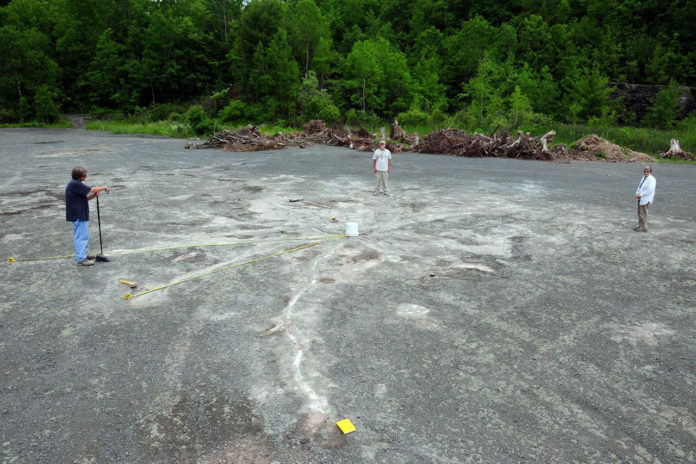The origin of trees and forests in the Mid Devonian was a turning point in Earth history, marking permanent changes to terrestrial ecology, geochemical cycles, atmospheric CO2 levels, and climate. However, how all these factors interrelate remains mostly unknown.
While sifting through fossil soils in the Catskill region near Cairo, N.Y., scientists revealed the broad root system of 385-million-year old trees that existed during the Devonian Period. While seed plants didn’t show up until nearly 10 million years after the fact, these preserved root systems show proof of the presence of trees with leaves and wood — both of which are common in modern seed plants.
The study, in other words, found the evidence that the transition toward forests as we know them today began earlier than typically believed.
Lead author William Stein, emeritus professor of biological sciences at Binghamton University, said, “The Devonian Period represents a time in which the first forest appeared on planet Earth. The effects were of the first-order magnitude in terms of changes in ecosystems, what happens on the Earth’s surface and oceans, CO2 concentration in the atmosphere and global climate. So many dramatic changes occurred at that time as a result of those original forests that the world has never been the same since.”
In 2012, scientists described the evidence of the fossil forest at Gilboa- home to one of the Earth’s oldest forests. This discovery at Cairo, about a 40-minute drive from the original site, now reveals an even older forest with dramatically different compositions.
Christopher Berry, a paleobotanist at Cardiff University in the United Kingdom, said, “The Cairo site is exceptional. You are walking through the roots of ancient trees. Standing on the quarry surface, we can reconstruct the living forest around us in our imagination.”
The site was primarily discovered in 2009 and is still being analyzed. Some of the fossilized roots there are 15 centimeters in diameter and form 11-meter-wide horizontal radial patterns spreading out from where the vertical tree trunks once stood. They seem to belong to Archaeopteris, a type of tree with large woody roots and woody branches with leaves that are related in some way to modern trees.
The second rooting system- scientists believe belonged to a palm tree-like tree called Eospermatopteris. The third root system surprised scientists. It belongs to a tree thought to only exist during the Carboniferous Period and beyond: “scale trees” belonging to the class Lycopsida.
Stein said, “What we have at Cairo is a rooting structure that appears identical to great trees of the Carboniferous coal swamps with fascinating elongated roots. But no one has yet found body fossil evidence of this group this early in the Devonian. Our findings are perhaps suggestive that these plants were already in the forest, but perhaps in a different environment and earlier than generally believed. Yet we only have a footprint, and we await additional fossil evidence for confirmation.”
Scientists further want to continue the investigation of the Catskill region and compare their findings with fossil forests around the world.
Stein said, “It seems to me, worldwide, many of these kinds of environments are preserved in fossil soils. And I’d like to know what happened historically, not just in the Catskills, but everywhere. Understanding evolutionary and ecological history — that’s what I find most satisfying.”
